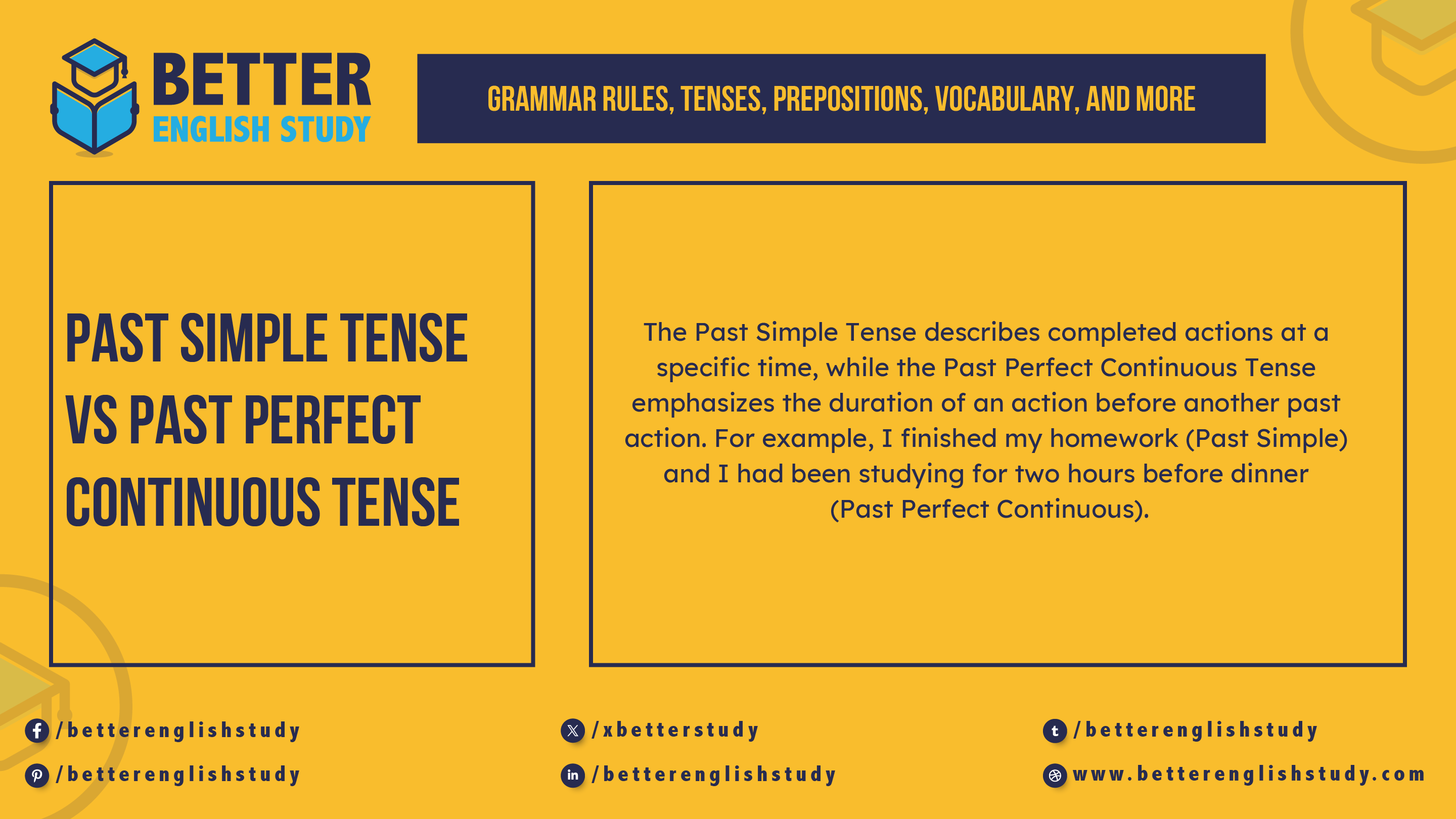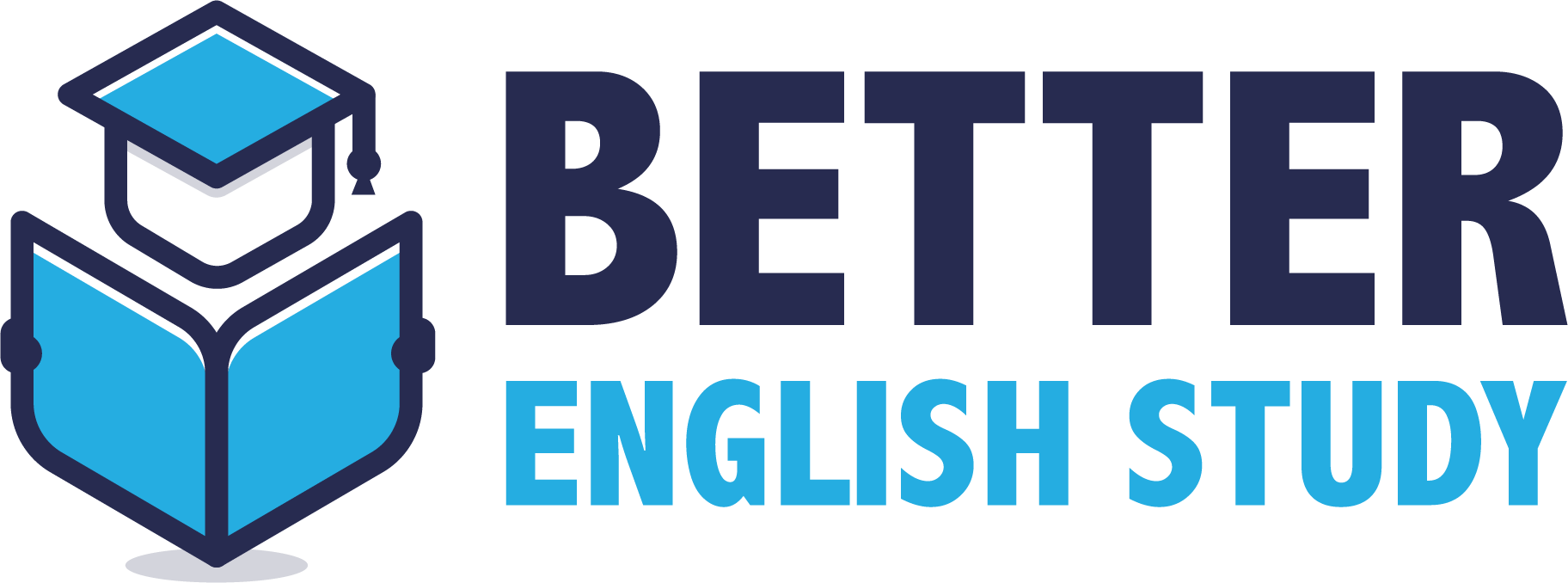
The Past Simple Tense describes completed actions at a specific time, while the Past Perfect Continuous Tense emphasizes the duration of an action before another past action. For example, “I finished my homework” (Past Simple) and “I had been studying for two hours before dinner” (Past Perfect Continuous).
Understanding verb tenses is crucial for effective communication. The Past Simple Tense allows us to express actions that happened at a definite time in the past. It provides clarity and simplicity in narration. On the other hand, the Past Perfect Continuous Tense helps convey the duration of an ongoing action leading up to another event.
This tense adds depth to storytelling, highlighting experiences and their relevance to subsequent actions. Mastering these tenses enhances writing and speaking skills.
Introduction To Past Tenses
Understanding past tenses is essential in English grammar. They help describe actions that have already happened. There are three main types: past simple, past continuous, and past perfect continuous.
The past simple tense expresses actions completed at a specific time. For example, “She played soccer yesterday.” It shows a clear end to the action.
On the other hand, the past perfect continuous tense describes actions that were ongoing before another action. For instance, “She had been playing soccer for an hour before it started to rain.” This indicates the action’s duration before another event.
Recognizing the difference helps in forming clear sentences. Using these tenses correctly improves communication skills.
Basics Of Past Simple Tense
The Past Simple Tense describes actions that happened in the past. It shows that an action is complete. The structure is straightforward: subject + past verb. For example, “I walked to school.” This means the action is finished.
Common signal words include: yesterday, last week, and in 2010. These words help indicate when the action took place. For example, “She visited her friend yesterday.” This tells us the action happened in the past.
Use the past simple for a specific time in the past. It does not connect to the present. Remember, it focuses on completed actions.
Exploring Past Perfect Continuous Tense
The Past Perfect Continuous Tense shows actions that were ongoing in the past. It emphasizes the duration of an action before another past action.
Formation includes the auxiliary verbs “had been” followed by the present participle (verb + ing). For example, “She had been studying for hours.” This indicates that studying occurred before another past event.
Common signal words for this tense are “for,” “since,” and “before.” These words help indicate the time frame of the action.
| Signal Word | Example |
|---|---|
| For | He had been running for two hours. |
| Since | They had been living there since 2010. |
| Before | She had been working before he arrived. |

Difference between Past Simple Tense And Past Perfect Continuous Tense
| Aspect | Past Simple Tense | Past Perfect Continuous Tense |
|---|---|---|
| Usage | Describes a completed action or event that happened at a specific time in the past. | Describes an action that was ongoing for a period of time before another action or specific point in the past. |
| Focus | Focuses on a single, completed action in the past. | Focuses on the duration of an action that was happening before a past event. |
| Structure | verb + -ed (for regular verbs) or irregular verb form (e.g., walked, ate) | had been + present participle (e.g., had been walking, had been working) |
| Example 1 | I finished my homework last night. | I had been finishing my homework when the power went out. |
| Example 2 | They left the party at 10 p.m. | They had been partying for three hours before they left. |
| Emphasis | The emphasis is on the fact that the action occurred in the past. | The emphasis is on the duration or continuity of the action up until another past event. |
| Keywords | Often uses “yesterday,” “last week,” “in 2010,” etc. | Often uses “for,” “since,” or expressions of time (e.g., “for two hours before”). |
- Past simple describes a completed action that happened at a specific point in the past.
- Past perfect continuous focuses on the duration of an action that had been happening up to a certain point or before another past action.
Practical Examples
The Past Simple Tense describes actions that happened at a specific time. For example, “I played soccer yesterday.” This shows a completed action.
On the other hand, the Past Perfect Continuous Tense focuses on actions that were ongoing before another action. An example is, “I had been playing soccer for two hours before it rained.” This indicates a duration.
Understanding these tenses helps in expressing time clearly. Using them correctly makes your writing more effective.
Common Mistakes And Confusions
Many people confuse past simple tense and past perfect continuous tense. Mixing these tenses can lead to unclear sentences. For example, “I played soccer” is past simple. It shows a completed action. In contrast, “I had been playing soccer” indicates an ongoing action before another past event.
Choosing the right tense is important. Use past simple for actions that happened at a specific time. Use past perfect continuous to emphasize the duration of an action up to a point in the past. This helps to clarify the timeline of events.
Common mistakes include:
- Using past simple when the action is ongoing.
- Not recognizing when to use past perfect continuous.
Tips For Mastering Past Tenses
Understanding the Past Simple Tense and Past Perfect Continuous Tense is essential. Use Past Simple for actions completed in the past. For example, “I walked to school.” This tense shows a clear start and end time.
Past Perfect Continuous Tense focuses on actions that were ongoing before another action in the past. For example, “I had been walking for an hour when it started to rain.” This shows duration before a specific event.
| Tense | Example |
|---|---|
| Past Simple | I finished my homework. |
| Past Perfect Continuous | I had been studying before the exam. |
Practice exercises help reinforce these concepts. Write sentences using both tenses. Try mixing them in short stories. This method improves understanding and usage.
Real-life application makes learning fun. Talk about your day using both tenses. This practice strengthens your language skills.
Frequently Asked Questions
What Is The Past Simple Tense?
The Past Simple Tense describes actions completed in the past. It usually includes a specific time reference, such as “yesterday” or “last week. ” For example, “I walked to the store. ” This tense is straightforward and commonly used in everyday conversation.
How Does Past Perfect Continuous Tense Work?
Past Perfect Continuous Tense shows an ongoing action before another past event. It emphasizes the duration of the action. For instance, “I had been studying for two hours when she called. ” This tense highlights the continuity leading up to a specific moment in the past.
When Should I Use Past Simple?
Use Past Simple for actions that happened at a definite time. It’s ideal for storytelling or recounting events. For example, “They visited Paris last summer. ” This tense is effective for conveying completed actions without focusing on duration.
When Is Past Perfect Continuous Used?
Past Perfect Continuous is used to emphasize ongoing actions before another past action. Use it when you want to highlight duration or progression. For instance, “She had been working there for five years before she left. ” This tense provides context and depth to past events.
Conclusion
Understanding the difference between the past simple tense and the past perfect continuous tense is crucial for effective communication. Each tense serves a distinct purpose in conveying time and action. By practicing with examples, you can enhance your grammar skills and improve your writing clarity.
Master these tenses for better storytelling.
